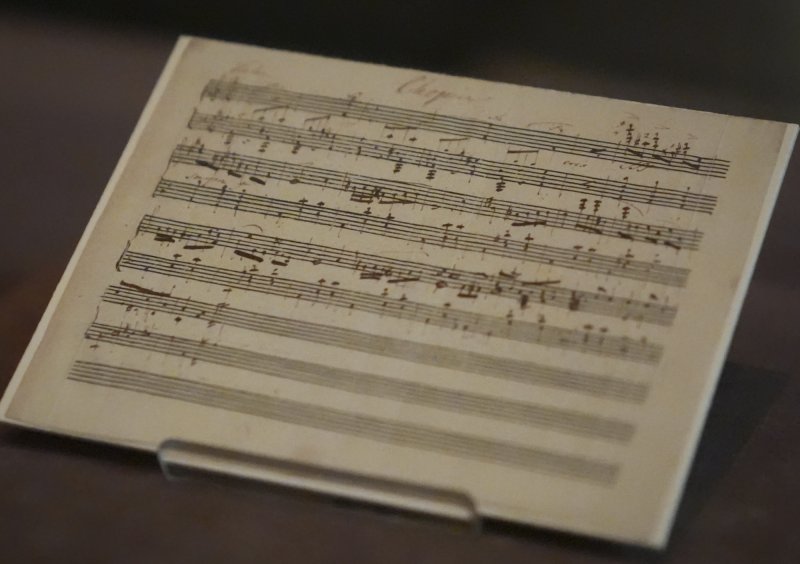Artur Szklener, director of the Fryderyk Chopin Institute in Warsaw, the Polish capital city where the composer grew up, agreed that the document is consistent with the kinds of ink and paper Chopin used during his early years in Paris.
Musically, the piece evokes the “brilliant style” that made Chopin a luminary in his time, but it also has features unusual for his compositions, Szklener said.
“First of all, it is not a complete work, but rather a certain musical gesture, a theme laced with rather simple piano tricks alluding to a virtuoso style,” Szklener explained in a lengthy statement released after the document was revealed last month.
He and other experts conjecture the piece could have been a work in progress. It may have also been a copy of another’s work, or even co-written with someone else, perhaps a student for a musical exercise.
Jeffrey Kallberg, a University of Pennsylvania music professor and Chopin expert who helped authenticate the document, called the piece a “little gem” that Chopin likely intended as a gift for a friend or wealthy acquaintance.
“Many of the pieces that he gave as gifts were short — kind of like ‘appetizers’ to a full-blown work,” Kallberg said in an email. “And we don’t know for sure whether he intended the piece to see the light of day because he often wrote out the same waltz more than once as a gift.”
David Ludwig, dean of music at The Juilliard School, a performing arts conservatory in Manhattan, agreed the piece has many of the hallmarks of the composer’s style.
“It has the Chopin character of something very lyrical and it has a little bit of darkness as well,” said Ludwig, who was not involved in authenticating the document.
But Ludwig noted that, if it’s authentic, the tightly composed score would be one of Chopin’s shortest known pieces. The waltz clocks in at under a minute long when played on piano, as many of Chopin’s works were intended.


